-
EXECUTIVE SUMMARY
-
MARKET INTRODUCTION
-
Definition
-
Scope of the Study
- Research Objective
- Assumptions
- Limitations
-
RESEARCH METHODOLOGY
-
Overview
-
Data Mining
-
Secondary Research
-
Primary Research
- Primary Interviews
- Breakdown of Primary Respondents
-
and Information Gathering Process
-
Forecasting Application
-
Market Size Estimation
- Bottom-Up Approach
- Top-Down Approach
-
Data Triangulation
-
Validation
-
MARKET DYNAMICS
-
Overview
-
Drivers
-
Restraints
-
Opportunities
-
MARKET FACTOR ANALYSIS
-
Value Chain Analysis
-
Porter’s Five Forces Analysis
- Bargaining Power
- Threat of New Entrants
- Threat of Substitutes
- Intensity of Rivalry
-
of Suppliers
-
5.2.2.
-
Bargaining Power of Buyers
-
COVID-19 Impact Analysis
- Market Impact Analysis
- Impact on Supply
-
Chain
-
5.3.3.
-
Regional Impact
-
5.3.4.
-
Opportunity and Threat Analysis
-
GLOBAL DNA FORENSICS MARKET, BY PRODUCT TYPE
-
Overview
-
Analyzers & Sequencer
-
Software & Services
-
Consumables
-
GLOBAL DNA FORENSICS
-
MARKET, BY SOURCE
-
7.1.
-
Overview
-
7.2.
-
Hair
-
Blood
-
Bones
-
Others
-
GLOBAL DNA FORENSICS
-
MARKET, BY TECHNIQUE
-
8.1.
-
Overview
-
8.2.
-
Next-generation Sequencing
-
Capillary Electrophoresis
-
PCR Amplification
-
GLOBAL DNA FORENSICS MARKET, BY APPLICATION
-
Overview
-
Criminal Casework
-
Missing Person Identification
-
Others
-
GLOBAL DNA FORENSICS
-
MARKET, BY REGION
-
10.1.
-
Overview
-
10.1.
-
North America
-
10.1.1.
-
US
-
10.1.2.
-
Canada
-
10.2.
-
Europe
-
10.2.1.
-
Germany
-
10.2.2.
-
France
-
10.2.3.
-
UK
-
10.2.4.
-
Italy
-
10.2.5.
-
Spain
-
10.2.6.
-
Rest of Europe
-
10.3.
-
Asia-Pacific
-
10.3.1.
-
China
-
10.3.2.
-
India
-
10.3.3.
-
Japan
-
10.3.4.
-
South Korea
-
10.3.5.
-
Australia
-
10.3.6.
-
Rest of Asia-Pacific
-
10.4.
-
Rest of the World
-
10.4.1.
-
Middle East
-
10.4.2.
-
Africa
-
10.4.3.
-
Latin America
-
11.
-
COMPANY LANDSCAPE
-
11.1.
-
Overview
-
11.2.
-
Competitive Analysis
-
11.3.
-
Market Share Analysis
-
11.4.
-
Major Growth Strategy in the DNA forensics market,
-
Competitive Benchmarking
-
Leading Players in Terms
-
of Number of Developments in the DNA forensics market,
-
Key developments and Growth Strategies
- New Product Launch/Service
- Joint Ventures
-
Deployment
-
11.7.2.
-
Merger & Acquisitions
-
Major Players Financial Matrix
- Sales & Operating
-
Income, 2021
-
11.8.2.
-
Major Players R&D Expenditure. 2021
-
COMPANY PROFILES
-
Thermo Fisher Scientific
- Company Overview
- Financial Overview
- Products Offered
- Key Developments
- SWOT Analysis
- Key Strategies
-
Agilent Technologies
- Company Overview
- Financial Overview
- Products Offered
- Key Developments
- SWOT Analysis
- Key Strategies
-
Mawi DNA Technologies
-
LLC
-
12.3.1.
-
Company Overview
-
12.3.2.
-
Financial Overview
-
12.3.3.
-
Products Offered
-
12.3.4.
-
Key Developments
-
12.3.5.
-
SWOT Analysis
-
12.3.6.
-
Key Strategies
-
12.4.
-
Hamilton Company
-
12.4.1.
-
Company Overview
-
12.4.2.
-
Financial Overview
-
12.4.3.
-
Products Offered
-
12.4.4.
-
Key Developments
-
12.4.5.
-
SWOT Analysis
-
12.4.6.
-
Key Strategies
-
12.5.
-
QIAGEN NV
-
12.5.1.
-
Company Overview
-
12.5.2.
-
Financial Overview
-
12.5.3.
-
Products Offered
-
12.5.4.
-
Key Developments
-
12.5.5.
-
SWOT Analysis
-
12.5.6.
-
Key Strategies
-
12.6.
-
Illumina, Inc.
-
12.6.1.
-
Company Overview
-
12.6.2.
-
Financial Overview
-
12.6.3.
-
Products Offered
-
12.6.4.
-
Key Developments
-
12.6.5.
-
SWOT Analysis
-
12.6.6.
-
Key Strategies
-
12.7.
-
Oxygen Forensics, Inc.
-
12.7.1.
-
Company Overview
-
12.7.2.
-
Financial Overview
-
12.7.3.
-
Products Offered
-
12.7.4.
-
Key Developments
-
12.7.5.
-
SWOT Analysis
-
12.7.6.
-
Key Strategies
-
12.8.
-
Genetics Technology
-
12.8.1.
-
Company Overview
-
12.8.2.
-
Financial Overview
-
12.8.3.
-
Products Offered
-
12.8.4.
-
Key Developments
-
12.8.5.
-
SWOT Analysis
-
12.8.6.
-
Key Strategies
-
12.9.
-
Promega Corporation
-
12.9.1.
-
Company Overview
-
12.9.2.
-
Financial Overview
-
12.9.3.
-
Products Offered
-
12.9.4.
-
Key Developments
-
12.9.5.
-
SWOT Analysis
-
12.9.6.
-
Key Strategies
-
12.10.
-
LGC Ltd
-
12.10.1.
-
Company Overview
-
12.10.2.
-
Financial Overview
-
12.10.3.
-
Products Offered
-
12.10.4.
-
Key Developments
-
12.10.5.
-
SWOT Analysis
-
12.10.6.
-
Key Strategies
-
13.
-
APPENDIX
-
13.1.
-
References
-
13.2.
-
Related Reports
-
-
LIST OF TABLES
-
DNA FORENSICS
-
MARKET, SYNOPSIS, 2018–2030
-
DNA FORENSICS MARKET, ESTIMATES & FORECAST, 2018–2030
-
(USD MILLION)
-
TABLE
-
GLOBAL DNA FORENSICS MARKET, BY PRODUT TYPE, 2018–2030 (USD MILLION)
-
GLOBAL DNA FORENSICS
-
MARKET, BY SOURCE, 2018–2030 (USD MILLION)
-
GLOBAL DNA FORENSICS MARKET, BY TECHNIQUE,
-
GLOBAL DNA FORENSICS MARKET, BY APPLICATION, 2018–2030
-
(USD MILLION)
-
TABLE
-
NORTH AMERICA: DNA FORENSICS MARKET, BY PRODUCT TYPE, 2018–2030 (USD MILLION)
-
NORTH
-
AMERICA: DNA FORENSICS MARKET, BY SOURCE, 2018–2030 (USD MILLION)
-
NORTH AMERICA:
-
DNA FORENSICS MARKET, BY TECHNIQUE, 2018–2030 (USD MILLION)
-
NORTH AMERICA: DNA FORENSICS
-
MARKET, BY APPLICATION, 2018–2030 (USD MILLION)
-
US: DNA FORENSICS MARKET, BY PRODUCT TYPE,
-
US: DNA FORENSICS MARKET, BY SOURCE, 2018–2030 (USD
-
MILLION)
-
TABLE
-
US: DNA FORENSICS MARKET, BY TECHNIQUE, 2018–2030 (USD MILLION)
-
US: DNA FORENSICS
-
MARKET, BY APPLICATION, 2018–2030 (USD MILLION)
-
CANADA: DNA FORENSICS MARKET, BY PRODUCT
-
TYPE, 2018–2030 (USD MILLION)
-
CANADA: DNA FORENSICS MARKET, BY SOURCE, 2018–2030
-
(USD MILLION)
-
TABLE
-
CANADA: DNA FORENSICS MARKET, BY TECHNIQUE, 2018–2030 (USD MILLION)
-
CANADA: DNA
-
FORENSICS MARKET, BY APPLICATION, 2018–2030 (USD MILLION)
-
EUROPE: DNA FORENSICS
-
MARKET, BY PRODUCT TYPE, 2018–2030 (USD MILLION)
-
EUROPE: DNA FORENSICS MARKET, BY SOURCE,
-
EUROPE: DNA FORENSICS MARKET, BY TECHNIQUE, 2018–2030
-
(USD MILLION)
-
TABLE
-
EUROPE: DNA FORENSICS MARKET, BY APPLICATION, 2018–2030 (USD MILLION)
-
GERMANY: DNA
-
FORENSICS MARKET, BY PRODUCT TYPE, 2018–2030 (USD MILLION)
-
GERMANY: DNA FORENSICS
-
MARKET, BY SOURCE, 2018–2030 (USD MILLION)
-
GERMANY: DNA FORENSICS MARKET, BY TECHNIQUE,
-
GERMANY: DNA FORENSICS MARKET, BY APPLICATION, 2018–2030
-
(USD MILLION)
-
TABLE
-
FRANCE: DNA FORENSICS MARKET, BY PRODUCT TYPE, 2018–2030 (USD MILLION)
-
FRANCE: DNA
-
FORENSICS MARKET, BY SOURCE, 2018–2030 (USD MILLION)
-
FRANCE: DNA FORENSICS MARKET, BY TECHNIQUE,
-
FRANCE: DNA FORENSICS MARKET, BY APPLICATION, 2018–2030
-
(USD MILLION)
-
TABLE
-
ITALY: DNA FORENSICS MARKET, BY PRODUCT TYPE, 2018–2030 (USD MILLION)
-
ITALY: DNA FORENSICS
-
MARKET, BY SOURCE, 2018–2030 (USD MILLION)
-
ITALY: DNA FORENSICS MARKET, BY TECHNIQUE,
-
ITALY: DNA FORENSICS MARKET, BY APPLICATION, 2018–2030
-
(USD MILLION)
-
TABLE
-
SPAIN: DNA FORENSICS MARKET, BY PRODUCT TYPE, 2018–2030 (USD MILLION)
-
SPAIN: DNA FORENSICS
-
MARKET, BY SOURCE, 2018–2030 (USD MILLION)
-
SPAIN: DNA FORENSICS MARKET, BY TECHNIQUE,
-
SPAIN: DNA FORENSICS MARKET, BY APPLICATION, 2018–2030
-
(USD MILLION)
-
TABLE
-
UK: DNA FORENSICS MARKET, BY PRODUCT TYPE, 2018–2030 (USD MILLION)
-
UK: DNA FORENSICS
-
MARKET, BY SOURCE, 2018–2030 (USD MILLION)
-
UK: DNA FORENSICS MARKET, BY TECHNIQUE,
-
UK: DNA FORENSICS MARKET, BY APPLICATION, 2018–2030
-
(USD MILLION)
-
TABLE
-
REST OF EUROPE: DNA FORENSICS MARKET, BY PRODUCT TYPE, 2018–2030 (USD MILLION)
-
REST OF EUROPE:
-
DNA FORENSICS MARKET, BY SOURCE, 2018–2030 (USD MILLION)
-
REST OF EUROPE: DNA
-
FORENSICS MARKET, BY TECHNIQUE, 2018–2030 (USD MILLION)
-
REST OF EUROPE: DNA
-
FORENSICS MARKET, BY APPLICATION, 2018–2030 (USD MILLION)
-
ASIA-PACIFIC: DNA FORENSICS
-
MARKET, BY PRODUCT TYPE, 2018–2030 (USD MILLION)
-
ASIA-PACIFIC: DNA FORENSICS MARKET, BY SOURCE,
-
ASIA-PACIFIC: DNA FORENSICS MARKET, BY TECHNIQUE, 2018–2030
-
(USD MILLION)
-
TABLE
-
ASIA-PACIFIC: DNA FORENSICS MARKET, BY APPLICATION, 2018–2030 (USD MILLION)
-
JAPAN: DNA FORENSICS
-
MARKET, BY PRODUCT TYPE, 2018–2030 (USD MILLION)
-
JAPAN: DNA FORENSICS MARKET, BY SOURCE,
-
JAPAN: DNA FORENSICS MARKET, BY TECHNIQUE, 2018–2030
-
(USD MILLION)
-
TABLE
-
JAPAN: DNA FORENSICS MARKET, BY APPLICATION, 2018–2030 (USD MILLION)
-
CHINA: DNA FORENSICS
-
MARKET, BY PRODUCT TYPE, 2018–2030 (USD MILLION)
-
CHINA: DNA FORENSICS MARKET, BY SOURCE,
-
CHINA: DNA FORENSICS MARKET, BY TECHNIQUE, 2018–2030
-
(USD MILLION)
-
TABLE
-
CHINA: DNA FORENSICS MARKET, BY APPLICATION, 2018–2030 (USD MILLION)
-
INDIA: DNA FORENSICS
-
MARKET, BY PRODUCT TYPE, 2018–2030 (USD MILLION)
-
INDIA: DNA FORENSICS MARKET, BY SOURCE,
-
INDIA: DNA FORENSICS MARKET, BY TECHNIQUE, 2018–2030
-
(USD MILLION)
-
TABLE
-
INDIA: DNA FORENSICS MARKET, BY APPLICATION, 2018–2030 (USD MILLION)
-
AUSTRALIA: DNA
-
FORENSICS MARKET, BY PRODUCT TYPE, 2018–2030 (USD MILLION)
-
AUSTRALIA: DNA FORENSICS
-
MARKET, BY SOURCE, 2018–2030 (USD MILLION)
-
AUSTRALIA: DNA FORENSICS MARKET, BY TECHNIQUE,
-
AUSTRALIA: DNA FORENSICS MARKET, BY APPLICATION, 2018–2030
-
(USD MILLION)
-
TABLE
-
SOUTH KOREA: DNA FORENSICS MARKET, BY PRODUCT TYPE, 2018–2030 (USD MILLION)
-
SOUTH KOREA:
-
DNA FORENSICS MARKET, BY SOURCE, 2018–2030 (USD MILLION)
-
SOUTH KOREA: DNA FORENSICS
-
MARKET, BY TECHNIQUE, 2018–2030 (USD MILLION)
-
SOUTH KOREA: DNA FORENSICS MARKET, BY APPLICATION,
-
REST OF ASIA-PACIFIC: DNA FORENSICS MARKET, BY PRODUCT TYPE,
-
REST OF ASIA-PACIFIC: DNA FORENSICS MARKET, BY SOURCE, 2018–2030
-
(USD MILLION)
-
TABLE
-
REST OF ASIA-PACIFIC: DNA FORENSICS MARKET, BY TECHNIQUE, 2018–2030 (USD
-
MILLION)
-
TABLE
-
REST OF ASIA-PACIFIC: DNA FORENSICS MARKET, BY APPLICATION, 2018–2030 (USD
-
MILLION)
-
TABLE
-
REST OF THE WORLD: DNA FORENSICS MARKET, BY PRODUCT TYPE, 2018–2030 (USD
-
MILLION)
-
TABLE
-
REST OF THE WORLD: DNA FORENSICS MARKET, BY SOURCE, 2018–2030 (USD MILLION)
-
REST OF THE
-
WORLD: DNA FORENSICS MARKET, BY TECHNIQUE, 2018–2030 (USD MILLION)
-
REST OF THE
-
WORLD: DNA FORENSICS MARKET, BY APPLICATION, 2018–2030 (USD MILLION)
-
MIDDLE EAST:
-
DNA FORENSICS MARKET, BY PRODUCT TYPE, 2018–2030 (USD MILLION)
-
MIDDLE EAST: DNA FORENSICS
-
MARKET, BY SOURCE, 2018–2030 (USD MILLION)
-
MIDDLE EAST: DNA FORENSICS MARKET, BY TECHNIQUE,
-
MIDDLE EAST: DNA FORENSICS MARKET, BY APPLICATION, 2018–2030
-
(USD MILLION)
-
TABLE
-
AFRICA: DNA FORENSICS MARKET, BY PRODUCT TYPE, 2018–2030 (USD MILLION)
-
AFRICA: DNA
-
FORENSICS MARKET, BY SOURCE, 2018–2030 (USD MILLION)
-
AFRICA: DNA FORENSICS
-
MARKET, BY TECHNIQUE, 2018–2030 (USD MILLION)
-
AFRICA: DNA FORENSICS MARKET, BY APPLICATION,
-
LATIN AMERICA: DNA FORENSICS MARKET, BY PRODUCT TYPE, 2018–2030
-
(USD MILLION)
-
TABLE
-
LATIN AMERICA: DNA FORENSICS MARKET, BY SOURCE, 2018–2030 (USD MILLION)
-
LATIN AMERICA:
-
DNA FORENSICS MARKET, BY TECHNIQUE, 2018–2030 (USD MILLION)
-
LATIN AMERICA: DNA FORENSICS
-
MARKET, BY APPLICATION, 2018–2030 (USD MILLION)
-
LIST OF FIGURES
-
RESEARCH PROCESS
-
MARKET STRUCTURE FOR THE DNA FORENSICS MARKET
-
MARKET DYNAMICS
-
FOR THE DNA FORENSICS MARKET
-
DNA FORENSICS MARKET, SHARE, BY PRODCUT TYPE, 2021 (%)
-
DNA FORENSICS
-
MARKET, SHARE, BY SOURCE, 2021 (%)
-
DNA FORENSICS MARKET, SHARE, BY TECHNIQUE, 2021
-
(%)
-
FIGURE
-
DNA FORENSICS MARKET, SHARE, BY APPLICATION, 2021 (%)
-
DNA FORENSICS MARKET, SHARE, BY REGION,
-
FIGURE
-
NORTH AMERICA: DNA FORENSICS MARKET, SHARE, BY REGION, 2021 (%)
-
EUROPE: DNA FORENSICS
-
MARKET, SHARE, BY REGION, 2021 (%)
-
ASIA-PACIFIC: DNA FORENSICS MARKET, SHARE, BY
-
REGION, 2021 (%)
-
FIGURE
-
REST OF THE WORLD: DNA FORENSICS MARKET, SHARE, BY REGION, 2021 (%)
-
DNA FORENSICS
-
MARKET: COMPANY SHARE ANALYSIS, 2021 (%)
-
THERMO FISHER SCIENTIFIC: FINANCIAL OVERVIEW SNAPSHOT
-
THERMO FISHER
-
SCIENTIFIC: SWOT ANALYSIS
-
AGILENT TECHNOLOGIES: FINANCIAL OVERVIEW SNAPSHOT
-
AGILENT TECHNOLOGIES:
-
SWOT ANALYSIS
-
FIGURE
-
MAWI DNA TECHNOLOGIES LLC: FINANCIAL OVERVIEW SNAPSHOT
-
MAWI DNA TECHNOLOGIES LLC: SWOT ANALYSIS
-
HAMILTON COMPANY:
-
FINANCIAL OVERVIEW SNAPSHOT
-
HAMILTON COMPANY: SWOT ANALYSIS
-
QIAGEN NV: FINANCIAL OVERVIEW SNAPSHOT
-
QIAGEN NV:
-
SWOT ANALYSIS
-
FIGURE
-
ILLUMINA, INC.: FINANCIAL OVERVIEW SNAPSHOT
-
ILLUMINA, INC.: SWOT ANALYSIS
-
OXYGEN FORENSICS,
-
INC.: FINANCIAL OVERVIEW SNAPSHOT
-
OXYGEN FORENSICS, INC.: SWOT ANALYSIS
-
GENETICS TECHNOLOGY:
-
FINANCIAL OVERVIEW SNAPSHOT
-
GENETICS TECHNOLOGY: SWOT ANALYSIS
-
PROMEGA CORPORATION: FINANCIAL OVERVIEW
-
SNAPSHOT
-
FIGURE
-
PROMEGA CORPORATION: SWOT ANALYSIS
-
LGC LTD: FINANCIAL OVERVIEW SNAPSHOT
-
LGC LTD: SWOT
-
ANALYSIS

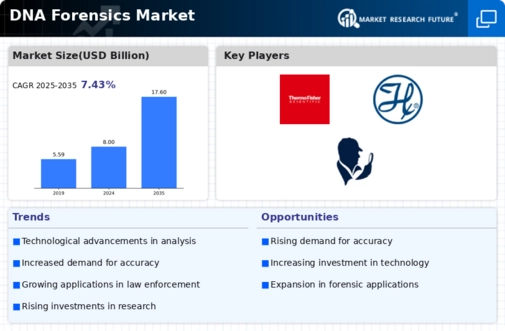
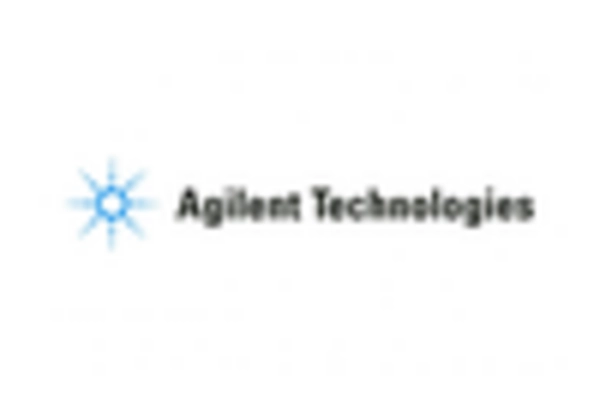
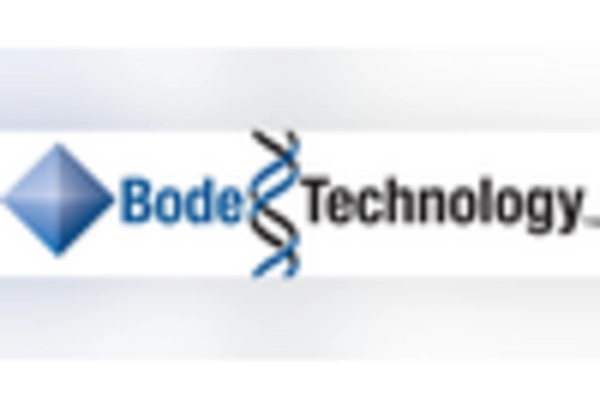
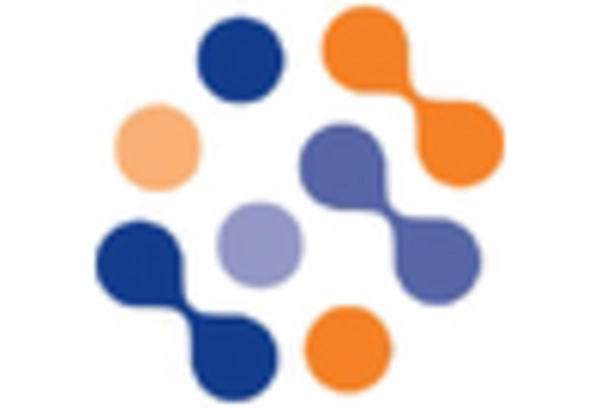
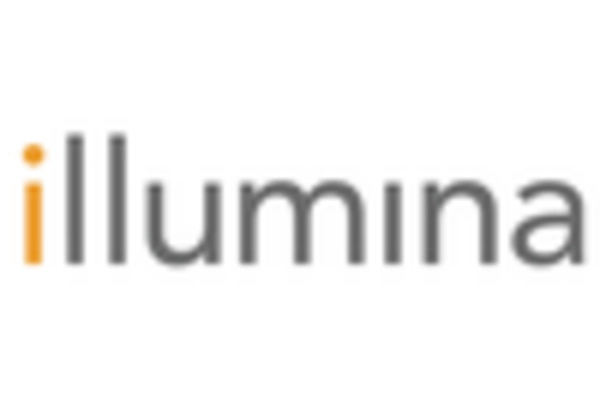
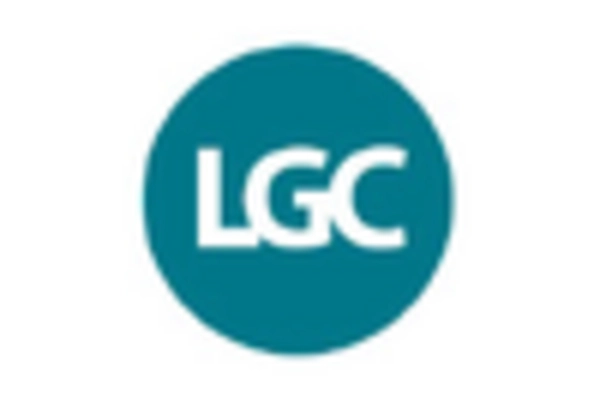
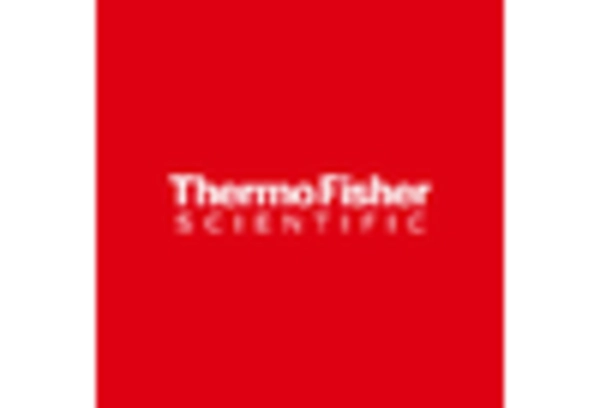

Leave a Comment